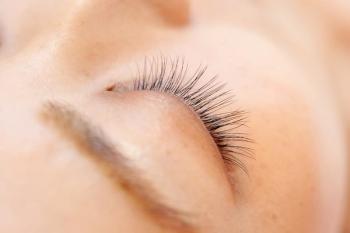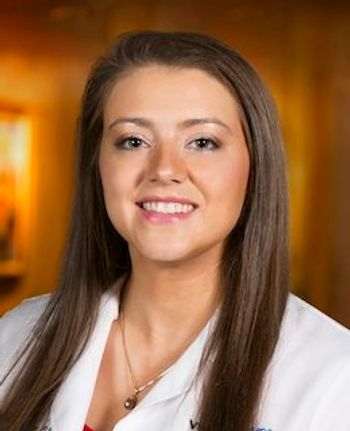
Increase contact lens comfort by paying attention to the lids
Patients present with contact lens discomfort for a variety of reasons. Mile Brujic, OD, FAAO, and David Kading, OD, FAAO, FCLSA, explain why proper lid hygiene may be the key to increasing contact lens comfort.
The views expressed here belong to the author. They do not necessarily represent the views of Optometry Times or UBM Medica.
We see it repeatedly in our practices-patients who wear contact lenses successfully for years-all day, every day. They continue with successful wear throughout their teens, 20s, and 30s.
Then, things start to change.
Those individuals who once were successful contact lens wearers and were adamant about never upgrading their contact lenses begin to ask you if there are advancements that may make them more comfortable.
We ODs must educate patients on the newest generation of contact lenses and refit them in either advanced disposable contact lenses that require care solutions or daily disposables. Often these modern designs will be enough to temporarily improve some patients’ wearing experience and provide them with relief.
Previously from Dr. Brujic and Dr. Kading:
Constant refitting not the answer
When patients return, they once again bring up discomfort and look to pursue a newer contact lens design. Patients may again find temporary comfort, but before long they are back in our offices asking for newer, more comfortable contact lenses.
We ODs have found ourselves in the trap of refitting-constantly searching for a contact lens that is more comfortable for our patients. Though we are both technologically savvy ODs who wish to pursue the latest advancements for our contact lens wearers, we realized we were trying to address patients’ discomfort by refitting them each time and expecting different results.
We began to look at the ocular surface to help determine what may be contributing to underlying contact lens discomfort. We have a number of diagnostic and treatment options for our patients that can help in our battle of contact lens discomfort and help these individuals resume normal, comfortable contact lens wear.
Related:
Causes of contact lens discomfort
Dry eye blepharitis syndrome (DEBS) is a term proposed by researchers meaning that dry eye and blepharitis are a continuum of the of the same disease. They describe that bacterial survival in high concentrations lead to the formation of biofilms on the lid margins.1
At low densities, bacteria may function commensally on the lid margin. As bacteria start to communicate with one another, certain genes become activated, producing virulence factors such as homoserine lactones (HSLs) which are present in high concentrations within the biofilm. Several of these virulence factors cause inflammation when they are secreted from the bacteria. These include proteases, lipases, hyaluraonidase, and collagenase.1
The presence of biofilm may cause the lash follicles to over populate with bacteria, resulting in the small lash bulb becoming inflamed. Debris at the base of the lashes represents the accumulation of bacteria byproducts that are over produced within the lash follicle. These byproducts are pushed to the surface as the lash grows.
Continued biofilm formation extends to the meibomian gland. This can alter the way that meibum is produced and secreted from the glands. If biofilms continue to harbor bacteria in high concentrations, bacteria can continue to overpopulate the meibomian glands.2
Increased biofilms can alter the meibomian gland secretions by increasing their melting point and causing them to thicken. Over time, the biofilm can affect the Krause and Wolfring glands which produce the aqueous layer of the tear film.1
DEBS helps explain the chronic and progressive nature of dry eye disease. How does DEBS play a role in contact lens comfort?
Related:
We can see how chronic blepharitis can cause a slow degradation of contact lens comfort. Paying particular attention to the lid margin for the presence of inflammation and debris at the base of the lashes is critical.
Research shows treatment reduces bacterial load
Researchers in Australia substantiated DEBS by looking at contact lens wearers and randomizing them to either microblepharoexfoliation utilizing BlephEx (RySurg) or standard lid hygiene. Prior to the study, researchers measured bacterial load on patients’ eyelids and found patients that who were symptomatic for contact lens discomfort had higher bacterial loads.3
After BlephEx treatment, subjects showed a significant reduction in bacterial load on the eyelids. Remarkably, 59 percent of the symptomatic contact lens wearers converted to being asymptomatic after BlephEx treatment. These findings are important as ODs attempt to improve contact lens comfort.3
Attention to lid margins key
By making sure we pay particular attention to the eyelid margins for the presence of inflammation and/or signs of debris in the lashes, we can treat patients appropriately and positively influence their contact lens-wearing experience. This will help us keep our patients wearing their contact lenses comfortably.
References
1. Rynerson JM, Perry HD. DEBS – a unified theory for dry eye and blepharitis. Clin Ophthalmol. 2016; 10: 2455–2467.
2. Blackie CA, Korb DR, Knop E, Bedi R, Knop N, Holland EJ. Nonobvi- ous obstructive meibomian gland dysfunction. Cornea. 2010;29(12): 1333–1345.
3. Siddireddy JS, Tan-Showyin J, Vijay AK, Willcox M. A Comfortable Eye Needs Fats. Presented at the University of New South Wales, Sydney, Australia 2015.
Newsletter
Want more insights like this? Subscribe to Optometry Times and get clinical pearls and practice tips delivered straight to your inbox.


















































.png)


